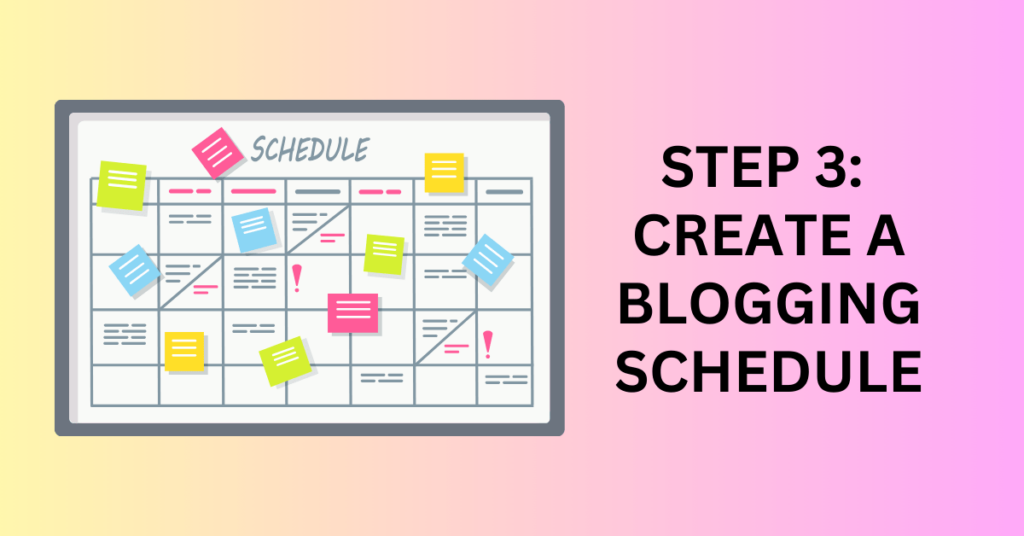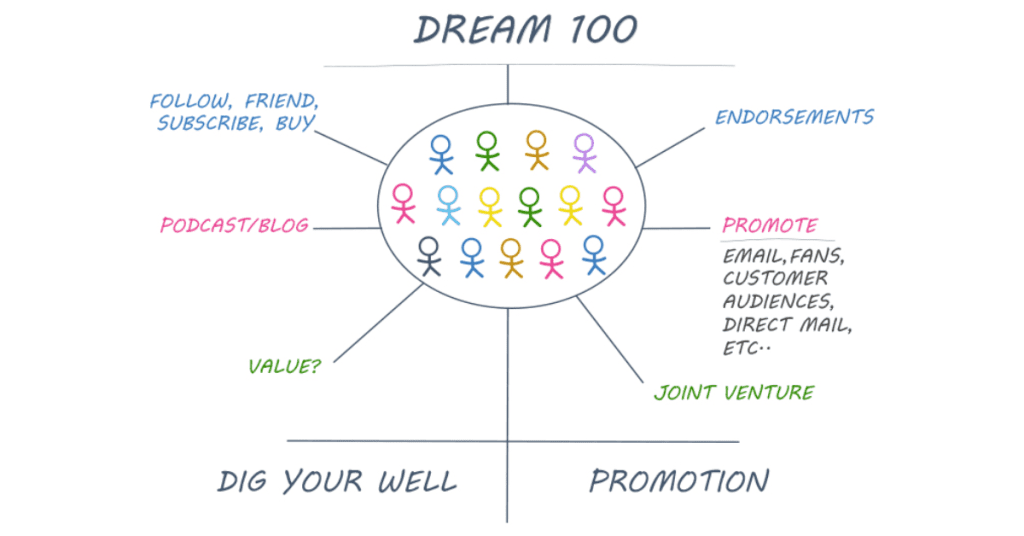Blogging has become an increasingly popular way for individuals to share their thoughts, expertise, and experiences with the world. Whether you’re looking to start a personal blog, share your passion for a particular hobby, or even establish a professional online presence, write and publish your first blog post is a crucial step in the journey.
In this comprehensive guide, we’ll walk you through the process of creating your first blog post, step by step. In addition, we will also provide detailed insights to help you craft a compelling and engaging piece.
Start Your WordPress Blog With Bluehost Hosting
What is a Blog?

A blog is an online platform where individuals or organizations share their thoughts, ideas, expertise, or experiences on various topics. It’s a dynamic digital space where content is regularly updated, usually in the form of articles or posts.
Blogs are characterized by their informal and conversational style. It allows writers to connect with a wide audience and engage in discussions on subjects that matter to them. The content is typically organized in reverse chronological order. The most recent posts will appear at the top of the page.
At its core, a blog provides an avenue for creative expression, knowledge sharing, and community building. It’s a versatile tool that can be used for personal journals, informational articles, reviews, business updates, or any form of communication that can be conveyed through the written word.
With the rise of various blogging platforms, creating and managing a blog has become accessible to people of all backgrounds and interests. This makes it an integral part of the modern digital landscape.
Step 1: Define Your Blog’s Purpose and Audience

Before diving into the world of blogging, it’s crucial to have a clear vision of what your blog aims to achieve and who your target audience is. Start by defining the purpose of your blog.
What message do you want to convey or what story do you want to tell? Consider what you’re passionate about, what expertise or experiences you possess, and how you can share them in a way that resonates with readers.
This will help you identify a niche for your blog, shaping its overall tone and style. Understanding your audience’s preferences and expectations is equally important. Are you writing for aspiring chefs, fitness enthusiasts, travel aficionados, or tech-savvy individuals? Tailoring your content to suit your audience’s interests and needs will be key to establishing a strong connection.
Step 2: Choose a Blogging Platform
Selecting the right platform for your blog is akin to choosing a home for your ideas. The platform will determine the look, feel, and functionality of your blog. There are several popular blogging platforms, each with its own set of features and capabilities.
WordPress, for instance, offers a high level of customization and is widely used, making it a great option for both beginners and seasoned bloggers. Blogger, owned by Google, is known for its simplicity and integration with Google services.
Medium is ideal for those who want a minimalist and easy-to-use platform, focusing primarily on writing. Wix, on the other hand, offers a drag-and-drop website builder, perfect for those seeking a visually appealing blog.
Evaluate these options based on your needs and preferences in terms of design, ease of use, customization, and scalability to choose the platform that suits you best.
Start Your WordPress Blog With Bluehost Hosting
Step 3: Create a Blogging Schedule

Consistency is the key to a successful blog. Creating a regular blogging schedule helps in managing your time effectively and keeping your readers engaged. Determine how often you can realistically create and publish quality content.
It could be once a week, twice a month, or any other frequency that aligns with your availability and the complexity of your content. Once you establish a schedule, stick to it religiously. This not only sets expectations for your readers but also disciplines you to produce content consistently.
Planning your content in advance and having a content calendar can be immensely helpful. This way, you’ll always have a roadmap of what to create, ensuring a steady stream of engaging content for your audience. Remember, quality is paramount; it’s better to publish less often but maintain high standards in your writing and content.
Step 4: Conduct Keyword Research
Keyword research is akin to understanding the language your potential readers use to search for information. It’s about identifying the words and phrases people enter into search engines related to your blog’s focus.
Utilize tools like Google Keyword Planner, SEMrush, or Ahrefs to discover relevant keywords in your niche. Choose keywords that have a good search volume and are relevant to your blog post. These keywords should naturally integrate into your blog post. This will include the title, subheadings, throughout the content, and even meta descriptions.
However, ensure that the integration is seamless and organic, as stuffing keywords unnaturally can hinder the readability and overall appeal of your blog post. When used effectively, keywords can significantly improve your blog’s visibility and help attract organic traffic to your site.
Start Your WordPress Blog With Bluehost Hosting
Step 5: Outline Your Blog Post

Outlining your blog post is akin to creating a roadmap for your content. It’s a crucial step where you organize your thoughts and structure your ideas in a clear and logical manner. The outline typically consists of an introduction, main sections or points, and a conclusion.
The introduction serves as a hook to captivate your readers, presenting the central theme of your post. Then, the main sections break down the topic into digestible segments, each covering a specific aspect or subtopic. These sections provide a natural flow to your narrative and ensure that your readers can easily follow and comprehend your message. Each section should have a clear purpose and contribute to the overall narrative of your blog post.
Lastly, the conclusion effectively summarizes the key takeaways, leaving a lasting impression on your readers and often encouraging further engagement.
Creating a well-structured outline not only helps you maintain a cohesive flow throughout your blog post but also assists in staying on track with your intended message. It acts as a guide that enables you to delve deeper into your subject matter. This will ensure that you cover all the essential points and present a comprehensive and compelling piece to your audience.
Step 6: Write a Compelling Introduction
The introduction of your blog post is your chance to make a strong first impression. Craft an engaging opening that grabs your readers’ attention and compels them to read further.
This could be a surprising fact, a thought-provoking question, a relevant quote, or a personal anecdote related to the topic. Clearly articulate the purpose of your blog post and what readers can expect to learn or gain from reading it. Set the stage for what’s to come without revealing everything.
You need to maintain an element of curiosity to encourage the reader to delve deeper into your content. An effective introduction not only entices readers but also sets the tone for the rest of the blog post, ensuring they stay invested till the end.
Start Your WordPress Blog With Bluehost Hosting
Step 7: Craft Engaging and Informative Content

Crafting engaging and informative content is the essence of a successful blog post. It’s about delivering value to your readers while keeping them captivated throughout their reading journey.
To achieve this, start by understanding your target audience and tailoring your writing style to resonate with them. Use language that they can relate to and find appealing. Incorporate storytelling techniques, anecdotes, or relatable examples to illustrate your points vividly.
Engage your readers emotionally, intellectually, or even humorously, depending on the tone of your blog. Additionally, presenting the information in a structured, organized manner ensures that readers can easily follow your ideas, enhancing their overall reading experience.
Moreover, delivering informative content means providing credible and valuable insights related to your chosen topic. Thoroughly research your subject matter, and use reputable sources to back up your claims and opinions.
Offer a unique perspective or angle that sets your content apart from the rest. Break down complex concepts into simpler, digestible explanations, making the information accessible to a broader audience. Infuse data, statistics, or expert quotes to bolster your arguments and establish credibility, further enriching the quality and authenticity of your content.
Furthermore, consider your readers’ needs and what they’re seeking from your blog. Address their pain points, answer their questions, or provide solutions to their problems. Empathize with their concerns and offer actionable advice or steps they can take.
Encourage interaction by inviting comments or feedback, fostering a sense of community and collaboration. Ultimately, crafting engaging and informative content is about striking a balance between capturing attention and delivering substantial value that leaves a lasting impact on your readers.
Start Your WordPress Blog With Bluehost Hosting
Step 8: Optimize Your Content for SEO
Optimizing your content for SEO begins with careful keyword research, identifying the words and phrases users are likely to search for.
These keywords should be strategically placed in your content, especially in the title, headings, and throughout the article, ensuring a natural and seamless fit. However, it’s vital to maintain a balance and not overuse keywords. This is because search engines prioritize content that reads organically and provides value to the reader.
Furthermore, optimizing meta tags, such as meta titles and meta descriptions, is crucial. These elements provide a concise preview of your content on the search results, influencing whether users click through to your page. Including the target keyword in these tags and making them engaging can significantly enhance your content’s visibility and click-through rate.
Quality and relevance are paramount in SEO optimization. Search engines, like Google, are continually evolving to prioritize content that meets the needs and expectations of users. Creating high-quality, informative, and engaging content positions you favourably in search rankings.
Additionally, a well-structured and easy-to-navigate article improves the user experience, indirectly contributing to SEO. It’s essential to understand your target audience and cater to their interests, concerns, or questions. By delivering content that resonates with your audience, you increase the likelihood of higher engagement, longer time spent on your page, and ultimately improved SEO rankings.
Another crucial aspect of content optimization is building a network of internal and external links. Internal links direct readers to other relevant pages within your website, enhancing user engagement and reducing bounce rates.
External links to authoritative and credible sources validate your content and demonstrate your commitment to providing accurate information. Search engines view well-structured link networks as a sign of a valuable and trustworthy website, positively impacting your SEO performance.
Start Your WordPress Blog With Bluehost Hosting
Step 9: Edit and Proofread Your Blog Post

Editing and proofreading are the final stages in refining your blog post, ensuring it’s polished, error-free, and ready for publication. Editing involves a comprehensive review of your content for coherence, clarity, and overall structure. It’s the time to refine your language, sentence structure, and tone to make the content more engaging and impactful.
Then, you need to rearrange paragraphs or sentences if needed, ensuring a smooth flow of ideas. Additionally, check for grammar, punctuation, and spelling errors. Also, pay attention to formatting, headings, and subheadings to maintain a consistent style throughout the blog post.
Proofreading is a meticulous examination of your blog post to catch any lingering errors that might have been missed during the editing process. It’s about scrutinizing every word, sentence, and punctuation mark to guarantee accuracy and professionalism.
Focus on typos, grammatical mistakes, and formatting issues. Read your blog post aloud. This technique often helps identify awkward phrasing or unclear sentences. If possible, ask someone else to proofread your content as fresh eyes might catch errors that you might have overlooked.
An error-free blog post enhances your credibility and ensures that your message is effectively conveyed to your audience.
Furthermore, when editing and proofreading, pay attention to the overall coherence of your ideas. Ensure that each paragraph transitions smoothly into the next, maintaining a logical progression of thoughts. Check for consistency in your writing style and voice throughout the blog post.
Additionally, assess the effectiveness of your introduction and conclusion. The introduction should captivate readers, setting the stage for what’s to come, while the conclusion should provide a satisfying wrap-up, leaving a lasting impression on your audience. Ultimately, the effort put into thorough editing and proofreading pays off with a polished, professional, and impactful blog post.
Start Your WordPress Blog With Bluehost Hosting
Step 10: Add Images and Multimedia
Enhance the visual appeal of your blog post by incorporating relevant images, infographics, videos, or audio clips. Visual elements not only break up the text and make your blog post more visually appealing but also help in conveying information effectively.
Choose high-quality, relevant visuals that complement your content and provide value to your readers. Alt text for images is essential for accessibility and SEO, so describe the image briefly and accurately. If relevant, include videos or audio clips to further engage your audience and enhance the overall richness of your blog post.
Step 11: Write a Compelling Headline for Your Blog Post

Crafting a compelling headline for your blog is an art that involves capturing the essence of your content in a few words while grabbing your audience’s attention. The headline is the first thing readers see, and it’s the decisive factor that determines whether they’ll click and engage with your content.
To create an impactful headline, start by understanding your target audience and what piques their interest. Consider what problem or question your blog post addresses and how it benefits your readers. A compelling headline is often solution-driven or presents a promise of valuable information, triggering curiosity and prompting readers to delve deeper.
Moreover, incorporating powerful language and emotional triggers can significantly enhance your headline’s appeal. Words that evoke emotions like curiosity, excitement, urgency, or desire can compel readers to take action.
Use strong adjectives, action verbs, and numbers to add weight to your headline. Additionally, employing elements of surprise or posing a thought-provoking question can intrigue readers, prompting them to click and explore further.
However, it’s essential to ensure that your headline accurately represents the content within your blog post to maintain trust and credibility with your audience.
Furthermore, consider the length and structure of your headline. A concise, to-the-point headline that’s easy to understand and remember is often more effective. Aim for a length that conveys the message succinctly while adhering to SEO best practices.
Utilize headline formulas or templates that have been proven to work, but always personalize them to suit your blog’s unique tone and style. In essence, a compelling headline is a balance between understanding your audience’s needs, leveraging emotional impact, and using effective language and structure to entice readers to explore your blog post.
Start Your WordPress Blog With Bluehost Hosting
Step 12: Publish and Promote Your Blog Post
Publishing and promoting your blog post are crucial steps in the journey of sharing your thoughts and expertise with the world. When you publish your blog post, it becomes accessible to your audience on your chosen blogging platform.
Ensure that the formatting, layout, and any visual elements align with your intended design. Double-check for any errors or typos, and make sure all hyperlinks are working correctly. Once you’re satisfied with the final product, confidently hit the publish button and watch your content go live.
However, publishing is just the beginning. Promoting your blog post is equally, if not more, important. Utilize social media platforms such as Facebook, Twitter, Instagram, and LinkedIn to share your posts with your followers. Craft engaging and informative captions or teasers to entice your audience to click on the link and read the full post.
Leverage email marketing by sending newsletters to your subscribers, providing a snippet of the blog post and a link to read more. Engage with relevant online communities or forums related to your blog’s niche and share your post there, adding value to the discussions.
Engage with your readers by responding to comments on your blog post, fostering a sense of community and encouraging further interaction. Sharing your blog post through various channels maximizes its reach and ensures that it reaches the right audience.
Final Thoughts – Start and Publish Your First Blog in 12 Steps
By diligently following these steps and investing time and effort into each stage, you’ll set yourself up for success in creating and publishing a compelling first blog post.
Blogging is an evolving journey, and each post you create is an opportunity to refine your skills and resonate with your audience. Embrace the process, stay persistent, and enjoy the fulfilling experience of sharing your thoughts and expertise with the world. Best of luck on your blogging journey!





